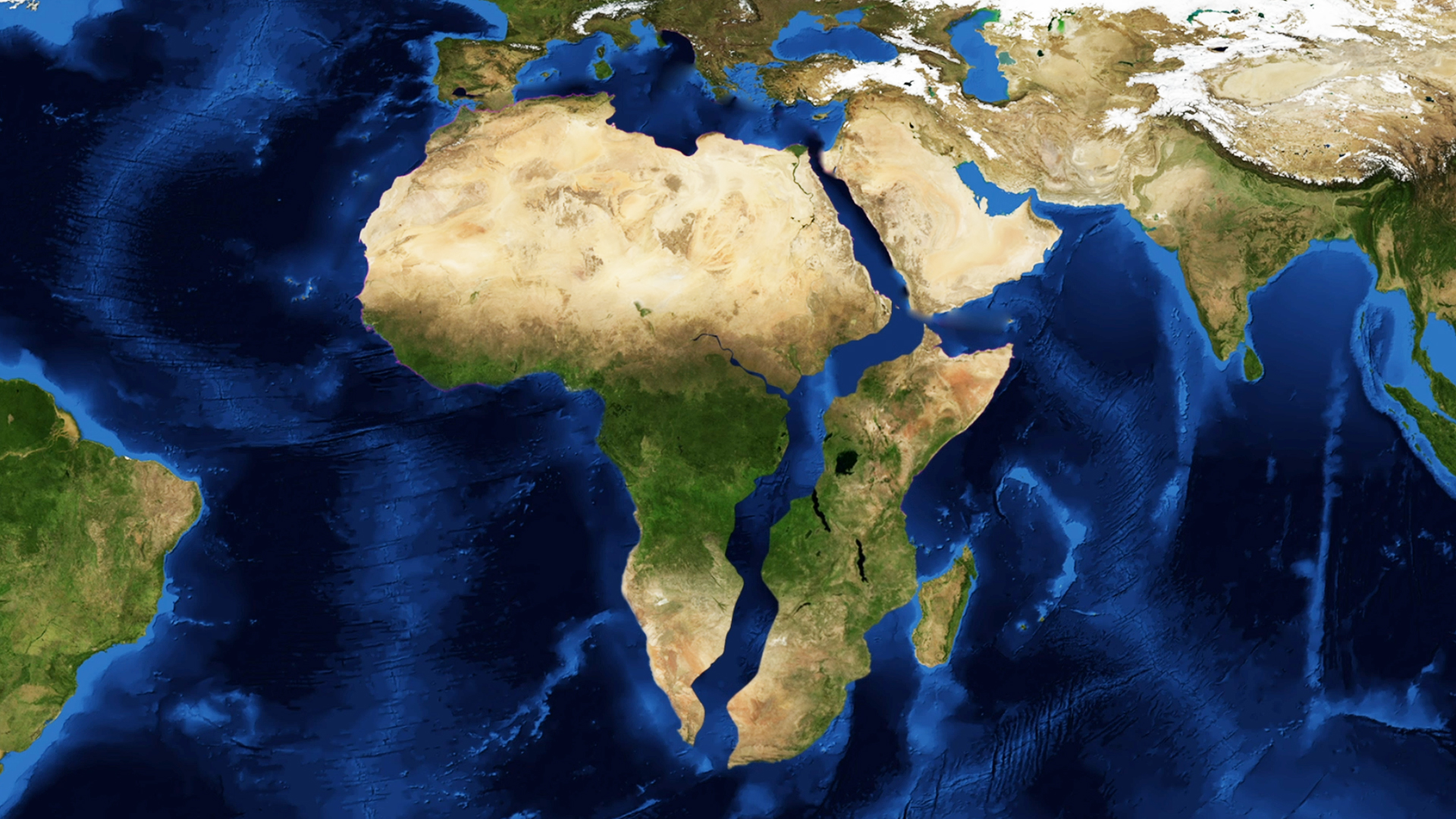Geologists have established that Africa is progressively splitting in two, a process that will eventually take entire nations away from the continent and result in the birth of a new ocean, said a report by the Week. According to a peer-reviewed study published in the journal Geophysical Research Letters, the slow separation of the continent is linked to a 35-mile-long crack that formed in Ethiopia’s desert after an earthquake in 2005, and will eventually become a completely new sea.
Media outlets have recently picked up on the studies of the continent split. According to Down to Earth, Christopher Moore, a doctorate student at the University of Leeds, said this geological process will inevitably divide the continent, resulting in currently landlocked countries such as Uganda and Zambia gaining their own coastlines in due time, which would take five to ten million years. Moore has been using satellite radar to track volcanic activity in East Africa linked to the continent’s fragmentation, as per a 2020 NBC report.
According to seismic data included in the paper, the formation of the rift was prompted by identical tectonic processes that occur at the ocean’s bottom, reported the Week.
The East African Rift formed in the southern end of the Great Rift Valley, which stretches from Lebanon in the north to Mozambique in the south, on the boundary of three tectonic plates: the African Nubian, African Somali, and Arabian. They are “slowly peeling away from each other,” according to NBC.
What Will Be the Repercussions?
The evacuation of people and the potential loss of lives will be an unintended consequence of this natural occurrence, explains the Down to Earth report. The advent of new coastlines may open up new chances for economic expansion.
These countries will benefit from additional trade ports, fishing grounds, and subsea internet infrastructure, which will boost their economic potential.
If the Somali and Nubian tectonic plates continue to separate, the rift will form a smaller continent that will contain present-day Somalia as well as sections of Kenya, Ethiopia, and Tanzania.
How Soon?
The three plates are separating at varying rates: the Nubian African Plate, the Somalian African Plate, and the Arabian Plate. According to Ken Macdonald, a marine geophysicist at the University of California, the Arabian Plate is separating from Africa at a rate of around an inch per year, while the two African plates are separating at a rate of half an inch to 0.2 inch per year.
This lonely stretch stands above the confluence of three tectonic plates that are slowly ripping away from each other, a complex geological process that scientists predict may split Africa in two and create a new ocean basin millions of years from now. For the time being, the most visible evidence is a 35-mile-long fracture in the Ethiopian desert.
What’s Rifting?
The Earth’s lithosphere, which consists of the crust and top section of the mantle, is separated into many tectonic plates that move in respect to each other at variable speeds. Tectonic forces not only move plates, but they also have the capacity to rupture them, resulting in the formation of a rift and, potentially, the establishment of new plate boundaries.
Rifting is a geological phenomenon that divides a single tectonic plate into two or more plates separated by diverging plate borders, explains the Down to Earth report.
This creates a rift valley, which is a lowland area formed when Earth’s tectonic plates separate, or rift. Rift valleys can be found on land as well as at the ocean’s bottom, where they are formed by the process of seafloor spreading. Rift valleys are distinct from river valleys and glacial valleys in that they are formed by tectonic action rather than erosion, reports National Geographic.
According to a research by the UK-based science website IFLScience, the phenomena of rifting can be traced back at least 138 million years, when South America and Africa were separated into different continents.
The gradual separation of the Somali and Nubian tectonic plates is currently causing the building of a rift, which could eventually result in the establishment of a new ocean basin.
The Arabian plate has been sliding away from Africa for the past 30 million years, resulting in the formation of the Red Sea and the Gulf of Aden between the two connected landmasses. Yet, in eastern Africa, the Somali plate is also separating from the Nubian plate, tearing apart along the East African Rift Valley, which runs through Ethiopia and Kenya.
By Vidushi Sagar
























 Vidushi Sagar is a sub-editor at News18.com. She writes on international issues, caste, and policy. Currently enrolled in the Google Newsroom Leadership Programme under the Columbia School of Journalism, New York, she is passionate about providing accessible, easy information to all through explainers, graphical, and immersive stories. She was also a recipient of the South Asian Foundation scholarship, under which she graduated from the Asian College of Journalism in Chennai. Keen on photography, she was a part of National Geographic’s Slow Journalism workshop, under the guidance of field veterans Paul Salopek, Matthieu Paley, and Melanie Burford. She wrote about urban migration of the Irula tribe – recognised for their affinity with snakes – while capturing their daily life through the lens.
Vidushi Sagar is a sub-editor at News18.com. She writes on international issues, caste, and policy. Currently enrolled in the Google Newsroom Leadership Programme under the Columbia School of Journalism, New York, she is passionate about providing accessible, easy information to all through explainers, graphical, and immersive stories. She was also a recipient of the South Asian Foundation scholarship, under which she graduated from the Asian College of Journalism in Chennai. Keen on photography, she was a part of National Geographic’s Slow Journalism workshop, under the guidance of field veterans Paul Salopek, Matthieu Paley, and Melanie Burford. She wrote about urban migration of the Irula tribe – recognised for their affinity with snakes – while capturing their daily life through the lens.




